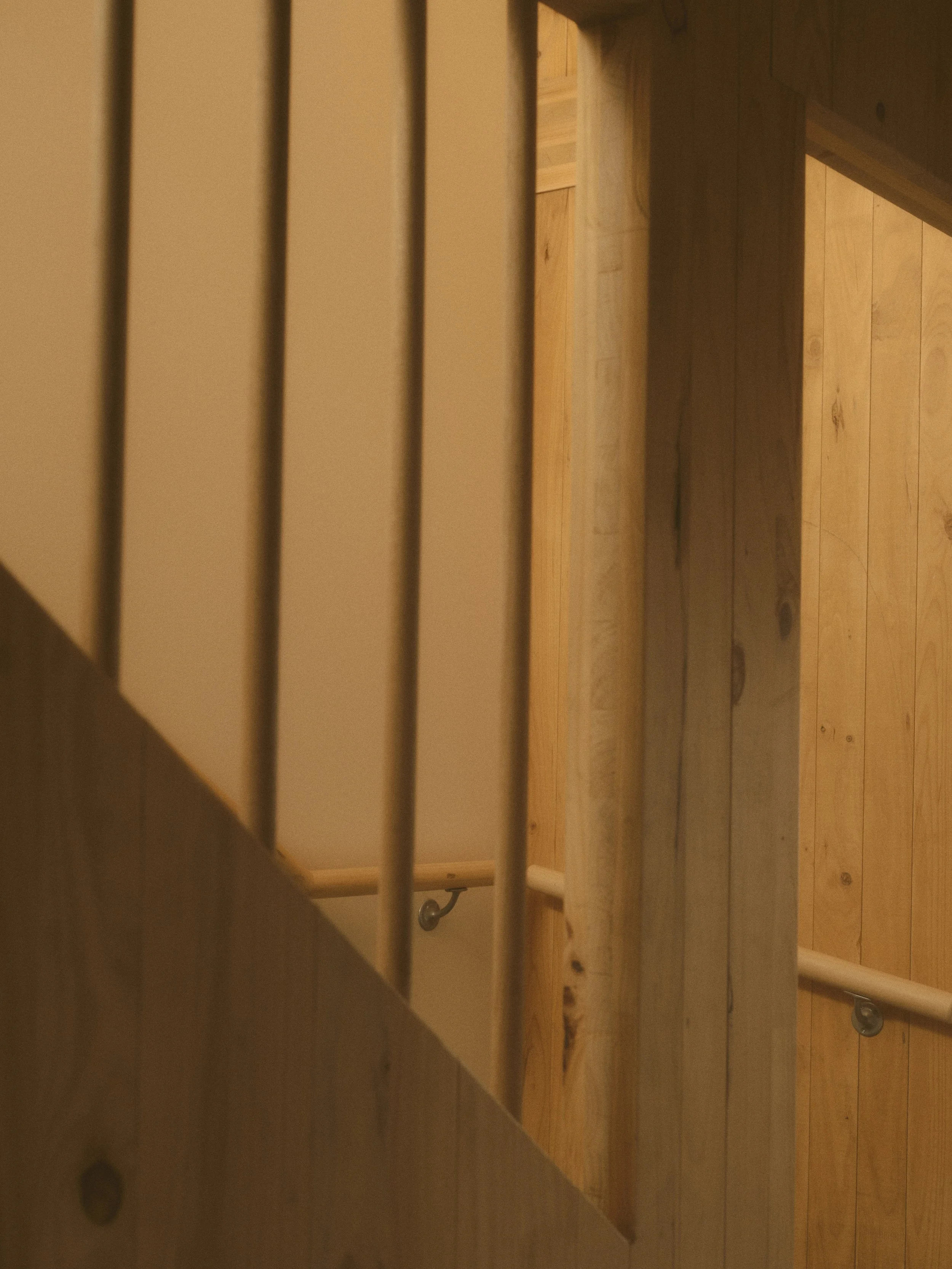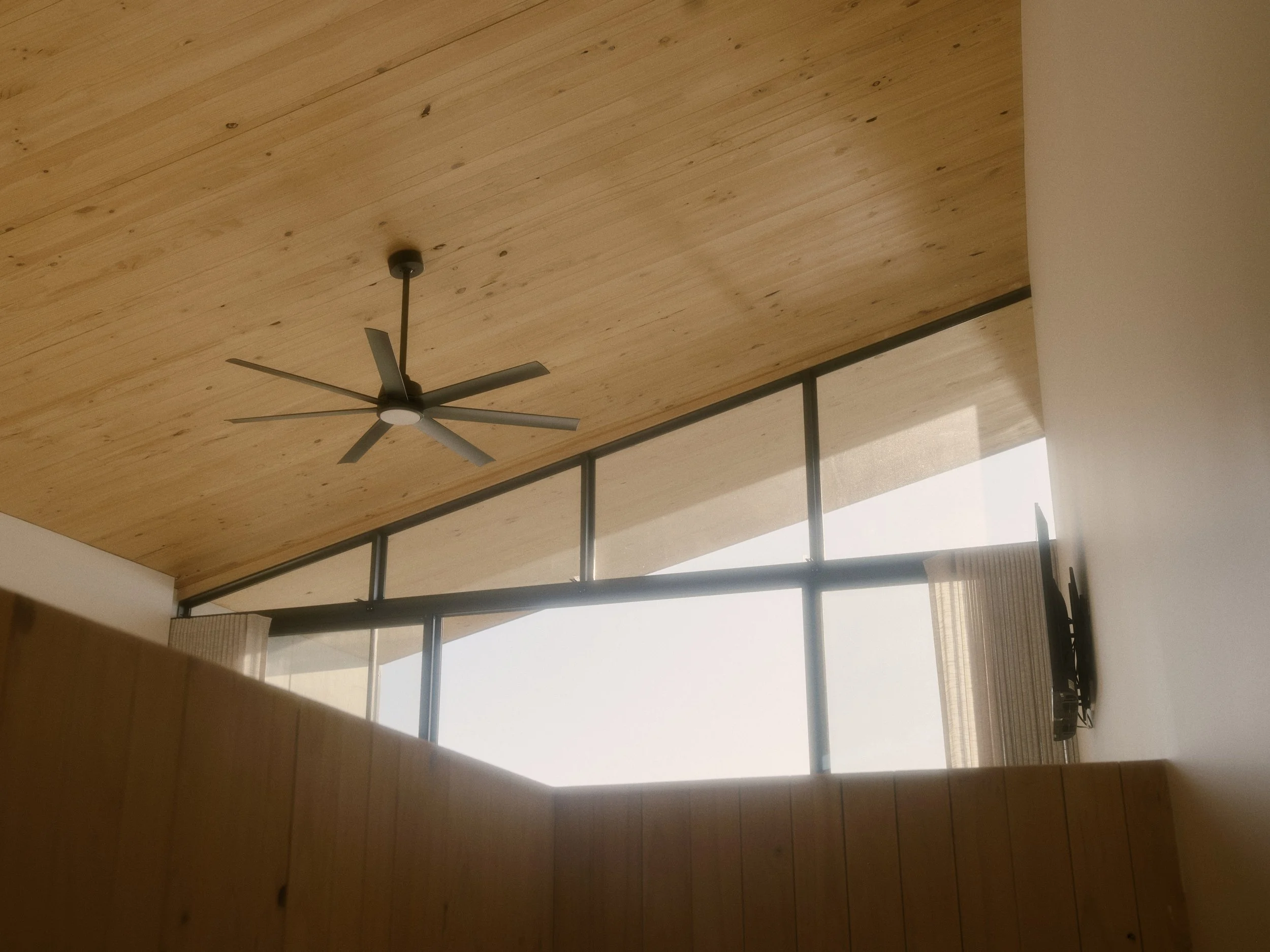Benefits of Mass Timber Design & Construction
Mountains, Jindabyne. Photo by Mark Clinton
Mass timber construction is a design and construction methodology that involves using large, solid engineered pieces of timber to build structures such as homes, apartments, and commercial buildings. Building owners in Sydney, Jindabyne and Canberra are discovering it’s benefits now!
This construction method offers many advantages over traditional construction materials like concrete and steel, especially in terms of building performance, speed of construction, environmental and health impacts for building end-users. Read on to learn more about the benefits of mass timber construction in different climates including Jindabyne (The Snowy Mountains), Canberra and Sydney!
What is Mass Timber?
Mass timber construction is a design and building technique that uses large, solid wood panels for structural support instead of, or in addition to, the carbon intensive choices of steel or concrete. It typically involves the use of engineered wood products, such as Cross-Laminated Timber (CLT), Laminated Veneer Lumber (LVL), and Glue-Laminated Timber (glulam or GLT).
Mass Timber Construction in Australia, including Sydney, Jindabyne & Canberra
Mass timber construction is a relatively new concept in Australia, but it is gaining popularity due to its many benefits. In recent years, there has been a significant increase in the use of mass timber in Australia, with several high-profile projects underway, such as the C6 mixed-use building in Perth, which is set to be the tallest timber building in the world!
The Atlassian HQ building in Sydney’s new tech precinct will combine the use of mass timber and steel and concrete to be what’s often referred to as a hybrid building. Sydney Fish Markets is another fantastic example of the application of mass timber. The Fish Markets project is truly remarkable, we recommend checking it out!
Mass timber is also gaining momentum in the smaller commercial and residential markets such as Jindabyne, with Builders and Architects learning more and more about its amazing capabilities and wide array of benefits.
Australia has become somewhat of a hot spot for mass timber projects, with professionals demonstrating its use in even the most complex and demanding construction projects.
Mountains, Jindabyne. Photo by Mark Clinton
Mountains, Jindabyne. Photo by Mark Clinton
Benefits of Mass Timber Construction in Sydney, Jindabyne & Canberra
Building Performance, Energy Efficiency, Weather & Fire Resistance
One of the key advantages of mass timber construction in Australia is its ability to withstand the country's harsh weather conditions whilst simultaneously enabling energy efficiency.
Utilising mass timber and additional products to seal panel joints can result in some impressively airtight buildings. This can also be a huge advantage in reducing heating and cooling bills, as there are fewer gaps for air to escape when we’re trying to change the inside temperature artificially. This air tightness property makes mass timber a brilliant choice for Passive House projects. Passive House is a globally recognised certification standard for sustainable houses and other buildings. The Australian climate is famously harsh, with high highs and low lows, especially in Jindabyne and Canberra. Air tightness can help to keep operating costs down.
Contrary to popular belief, mass timber construction is relatively fire-safe. The outer layers of mass timber panels char when exposed to heat, which creates a protective layer that insulates the inner layers and slows down the spread of fire. Have you ever tried to get a campfire going with the biggest piece of firewood you have?
Human Benefits
The benefits of humans spending time in nature are well accepted.
So well accepted, that now building professionals are seeking ways to increase our connection to nature in the built environment. It’s called biophilic design, and utilising mass timber can help us harness its benefits.
Whilst sawn and processed timber could only be considered indirect nature (an actual tree is considered direct nature), those who’ve spent an evening in an exposed mass timber building would tell you they have more soul than a gyprock-lined house. This is certainly the feedback that we hear from those who spend time in mass timber buildings that we’ve built in Jindabyne, which are available to rent as short-term accommodation.
Whilst more research is needed in this area, it has been proved that exposure to timber elements decreases blood pressure, reduces heart rates, and enhances comfort levels, thereby improving an occupant’s emotional and physiological state.
Fast, High-Quality Construction
Mass timber buildings can be constructed quickly due to the prefabrication of the elements offsite. This reduces on-site construction time, which can be especially important in urban areas such as Sydney and Canberra, where space is limited, or in cases where the available labour is limited and expensive (regional areas including Jindabyne). Fast construction also means less disruption to the local community, which is beneficial for project owners and their neighbours!
When it comes to value for money, we believe that mass timber design and construction is the best value methodology available around the world in 2024. This is our view when you balance out quality with cost.
With an increased focus on quality over simply cost of projects, developers and owners are looking to new technologies and techniques to raise the standard of buildings. As mass timber continues to capture more market share as opposed to concrete and steel which are decreasing in popularity, more and more of the new stock utilises mass timber.
If you’re not building with the best, most sustainable methodologies available now, your development or home may be seen as lower in value in the future. For example, if you were to look to rent or sell your building in a number of years, it will be compared against similar properties on the market. Mass timber is gaining popularity in Sydney, Jindabyne and Canberra due to it being seen as a higher quality product, so more of the properties yours will be compared against are likely to be mass timber. If your building is seen as lower quality than others available, it may be seen as less valuable, particularly to a new generation of property investors who hold sustainability higher in their priority list than older generations.
Environmentally Friendly
One of the primary benefits of mass timber construction is that it is relatively environmentally friendly, so can be seen as a step towards green construction. Trees absorb carbon dioxide from the atmosphere and store it in their wood fibres. When the trees are harvested, the carbon remains stored in the wood.
Whilst there is still debate over when the carbon “sequestered” should be measured, and ultimately who should take the credit (figuratively and financially), more use cases for wood products = more trees planted = more carbon sequestered, all thanks to more sustainable construction.
In contrast, the production of concrete and steel, which are commonly used in construction, generates a significant amount of carbon emissions. These products have high carbon footprints, being responsible for roughly 13% of the world’s emissions. Yes, you read that right!!
Mass timber construction, on the other hand, has a much lower carbon footprint. Timber is a renewable resource that can be sustainably harvested from responsibly managed forests, and all of the existing Australian mass timber suppliers have information available regarding how they ensure their wood is responsibly grown and harvested.
Aesthetically Pleasing
Mass timber buildings have a warm, natural aesthetic that many homeowners and occupiers find appealing. The natural wood grain and texture add charm and character to a building's interior. In some environments, mass timber elements can be left exposed to showcase the beauty of the wood, or they can be finished with a variety of coatings and finishes to achieve a particular look without covering up the material altogether.
Challenges
Of course, there are some challenges associated with mass timber construction, including cost and availability. However, as the industry continues to mature in Australia, these challenges will diminish in size and effect.
Whilst mass timber reduces time on site, industry professionals are still working to capture all of the cost advantages of this. As more and more projects are undertaken, we are getting closer to using timber to help us to reduce the costs of high quality construction.
Further, more and more suppliers as well as industry professionals are entering the mass timber space, which is increasing the availability of mass timber as a viable project option.
Whilst we are not yet capturing all of the benefits of mass timber, we are certainly capturing many, including those described above. Australia’s mass timber community is extraordinarily passionate about the methodology, and working hard to mature the market and pass on benefits to homeowners, developers and other clients. At Brother Nature, we are passionate about sharing the benefits of mass timber design and build with more and more people in Sydney, Jindabyne and Canberra.
Conclusion
In conclusion, there are many benefits of utilising mass timber construction over traditional construction materials, particularly in terms of building performance, energy efficiency, weather & fire resistance, human impacts, fast and high quality construction, environmental credentials and aesthetics.
In Australia, this construction method is becoming increasingly popular as building professionals recognize its potential for creating beautiful, high performing, and resilient buildings that can withstand the country's harsh weather conditions.
If you are considering building or renovating a home in Australia or gathering sustainable house ideas, we highly recommend exploring the many advantages of mass timber construction. Reach out to us via our live chat or Contact Us page, and we’d be more than happy to share more information with you. Or, if you’re looking at a project in Jindabyne or The Snowy Mountains, Sydney, or Canberra, we’d love to help you out!
This article was written with the help of AI.
References
We’ve compiled a list of the reference materials that helped to directly inform this article. This does not constitute a complete or formal bibliography. Feel free to reach out if you are looking for further information, or have any questions about these materials.
Christian Hoffmann, Michel Van Hoey, and Benedikt Zeumer for McKinsey & Company, https://www.mckinsey.com/industries/metals-and-mining/our-insights/decarbonization-challenge-for-steelKeegan Ramsden for the Princeton Student Climate Initiative, https://psci.princeton.edu/tips/2020/11/3/cement-and-concrete-the-environmental-impactC6 by Grange Development, https://c6perth.com/Atlassian HQ as described by SHoP, https://www.shoparc.com/projects/atlassian-hq/Sydney Fish Markets as described by Infrastructure NSW, https://newsydneyfishmarket.insw.com/insw/new-sydney-fish-marketGuo, H.; Liu, Y.; Chang, W.-S.; Shao, Y.; Sun, C. Energy Saving and Carbon Reduction in the Operation Stage of Cross Laminated Timber Residential Buildings in China. Sustainability 2017, 9, 292, https://www.mdpi.com/2071-1050/9/2/292Herms, Jens-Lüder. (2020). Achieving airtightness and weather protection of CLT buildings. E3S Web of Conferences. 172. 10011. 10.1051/e3sconf/202017210011, https://www.researchgate.net/publication/342588109_Achieving_airtightness_and_weather_protection_of_CLT_buildingsPro Clima, https://proclima.com.au/mass-timber-protection-system/https://living-future.org.au/biophilic-design/Sakuragawa, S., Miyazaki, Y., Kaneko, T. et al. Influence of wood wall panels on physiological and psychological responses. J Wood Sci 51, 136–140 (2005), https://jwoodscience.springeropen.com/articles/10.1007/s10086-004-0643-1Positive health effects of Stone Pine furniture, Joanneum Research Institute of Non-Invasive Diagnosis, 2012, https://humanresearch.at/newwebcontent/wp-content/uploads/2012/11/pdf_Zirbenholz_Folder_en.pdfWatchman, M., Potvin, A., and Demers, C. M. H. (2017). "Wood and comfort: A comparative case study of two multifunctional rooms," BioRes. 12(1), 168-182, https://bioresources.cnr.ncsu.edu/resources/wood-and-comfort-a-comparative-case-study-of-two-multifunctional-rooms/Agriculture Victoria, https://agriculture.vic.gov.au/climate-and-weather/understanding-carbon-and-emissions/trees-for-farm-health#:~:text=Trees%20store%20carbon%20in%20their,is%20returned%20to%20the%20air.Paul Fennell, Justin Driver, Christopher Bataille & Steven J. Davis, https://www.nature.com/articles/d41586-022-00758-4




